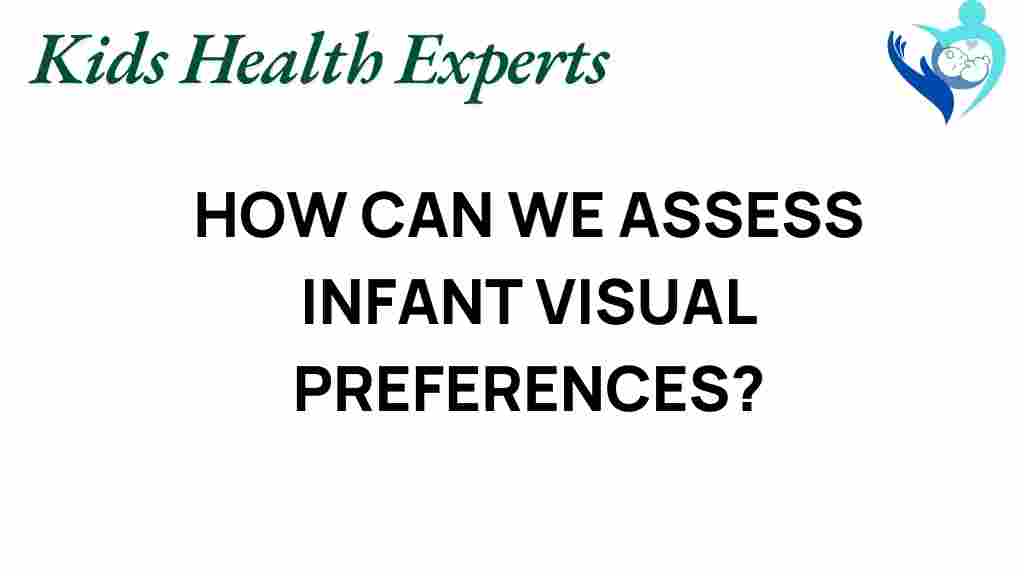Unlocking the Secrets: How Can We Assess Infant Visual Preferences?
Understanding infant visual preferences is crucial in the realm of child development. As infants explore their world, their visual experiences play a significant role in shaping their cognitive growth and overall development. By assessing these preferences, researchers and parents can gain valuable insights into an infant’s sensory exploration and developmental psychology. In this article, we will delve into various methods used to assess these preferences, the significance of visual stimuli, and how this knowledge can enhance early childhood development.
Importance of Assessing Infant Visual Preferences
Assessing infant visual preferences is not just an academic exercise; it has practical implications for understanding how infants interact with their environment. Here are some key reasons why this assessment is valuable:
- Cognitive Growth: Visual preferences can indicate cognitive development stages.
- Behavior Analysis: Observing how infants respond to different stimuli can provide insights into their learning processes.
- Early Intervention: Identifying atypical visual preferences might help in early detection of developmental issues.
- Enhancing Learning: Understanding what captures an infant’s attention can inform educational strategies.
Methods for Assessing Infant Visual Preferences
Various methods have been developed to assess infant visual preferences. Each technique offers unique insights into how infants perceive and interact with visual stimuli. Below are some of the most commonly used methods:
1. Eye Tracking
Eye tracking technology has revolutionized the way researchers assess infant visual preferences. By using specialized cameras and software to track eye movements, researchers can determine where an infant is looking and for how long. This method provides quantitative data on visual attention.
- Advantages: Highly accurate, can provide real-time data on visual preferences.
- Considerations: Requires specialized equipment and trained personnel.
2. Preferential Looking Paradigm
The preferential looking paradigm is a classic method used in developmental psychology. In this approach, infants are shown two different visual stimuli simultaneously. Researchers then observe which stimulus the infant looks at longer.
- Advantages: Simple to set up, does not require advanced technology.
- Considerations: Results can be subjective and may vary with each infant.
3. Habituation-Dishabituation Method
This method involves exposing infants to a specific visual stimulus until their interest wanes (habituation). Afterward, a new stimulus is introduced, and researchers observe whether the infant shows renewed interest (dishabituation).
- Advantages: Effective in measuring recognition and preference.
- Considerations: Requires careful planning to ensure stimuli are appropriately chosen.
4. Visual Paired Comparison
This method allows researchers to assess infant visual preferences by comparing new stimuli with previously seen stimuli. An infant’s preference for the novel stimulus over the familiar one indicates visual recognition.
- Advantages: Provides insights into memory and recognition.
- Considerations: Can be time-consuming and requires careful tracking of previous stimuli.
Factors Influencing Infant Visual Preferences
Several factors can influence an infant’s visual preferences. Understanding these factors can help researchers and caregivers better interpret the results of assessments:
- Age: Visual preferences can change significantly as infants grow.
- Developmental Stage: Different stages of cognitive growth affect how infants perceive visual stimuli.
- Environmental Factors: The context in which an infant is assessed can influence their responses.
- Individual Differences: Each infant may have unique preferences based on personality and experiences.
Step-by-Step Process for Conducting Visual Preference Assessments
To effectively assess infant visual preferences, follow this step-by-step process:
Step 1: Define the Objective
Clearly outline what you want to assess. Are you interested in understanding preferences for colors, shapes, or dynamic versus static images?
Step 2: Select Appropriate Methodology
Choose from the methods discussed above based on your resources and objectives. Eye tracking may provide the most detailed data, while the preferential looking paradigm is more accessible.
Step 3: Prepare Stimuli
Design or select visual stimuli that are age-appropriate and relevant to your research question. Ensure that the stimuli are distinct to avoid confusion.
Step 4: Conduct the Assessment
Set up the assessment environment to minimize distractions. Ensure that the infant is comfortable and relaxed. Collect data systematically, noting the duration of gaze and reactions.
Step 5: Analyze Data
Once data is collected, analyze it to determine visual preferences. Look for patterns in gaze duration and choice of stimuli.
Step 6: Interpret Results
Consider the implications of your findings in the context of child development. How do the preferences observed relate to existing theories or models in developmental psychology?
Troubleshooting Tips
When assessing infant visual preferences, researchers may encounter several challenges. Here are some troubleshooting tips:
- Infant Distraction: Ensure a calm environment and consider using soothing sounds or gentle movements to keep the infant engaged.
- Equipment Issues: Regularly check your equipment and have backup options ready to ensure smooth data collection.
- Data Variability: Expect some variability in responses; infants are individuals with their own likes and dislikes.
- Parental Involvement: Involve parents in the process to provide comfort and familiarity to the infant.
Conclusion
Assessing infant visual preferences is a fascinating area of study that offers insights into cognitive growth and early childhood development. By utilizing methods such as eye tracking, the preferential looking paradigm, and habituation-dishabituation, researchers can understand how infants interact with their visual environment. This understanding can inform practices in developmental psychology and enhance sensory exploration for infants.
As we continue to unlock the secrets of how infants perceive their world, we pave the way for better educational and developmental strategies that cater to their unique preferences and needs. For further reading on child development and sensory exploration, visit this informative resource.
This article is in the category Growth and created by KidsHealthExperts Team
